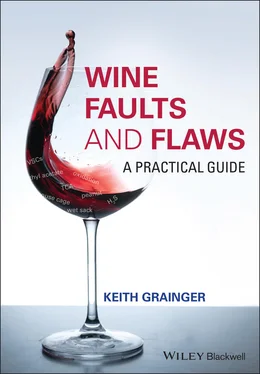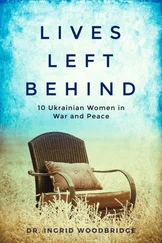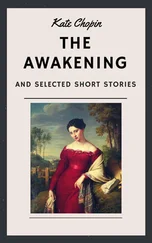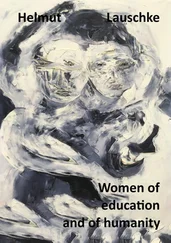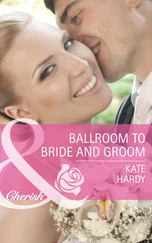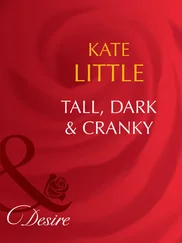Keith Grainger - Wine Faults and Flaws
Здесь есть возможность читать онлайн «Keith Grainger - Wine Faults and Flaws» — ознакомительный отрывок электронной книги совершенно бесплатно, а после прочтения отрывка купить полную версию. В некоторых случаях можно слушать аудио, скачать через торрент в формате fb2 и присутствует краткое содержание. Жанр: unrecognised, на английском языке. Описание произведения, (предисловие) а так же отзывы посетителей доступны на портале библиотеки ЛибКат.
- Название:Wine Faults and Flaws
- Автор:
- Жанр:
- Год:неизвестен
- ISBN:нет данных
- Рейтинг книги:4 / 5. Голосов: 1
-
Избранное:Добавить в избранное
- Отзывы:
-
Ваша оценка:
- 80
- 1
- 2
- 3
- 4
- 5
Wine Faults and Flaws: краткое содержание, описание и аннотация
Предлагаем к чтению аннотацию, описание, краткое содержание или предисловие (зависит от того, что написал сам автор книги «Wine Faults and Flaws»). Если вы не нашли необходимую информацию о книге — напишите в комментариях, мы постараемся отыскать её.
FLAWS
Wine Faults and Flaws: A Practical Guide
An essential guide to the faults and flaws that can affect wine
Wine Faults and Flaws — читать онлайн ознакомительный отрывок
Ниже представлен текст книги, разбитый по страницам. Система сохранения места последней прочитанной страницы, позволяет с удобством читать онлайн бесплатно книгу «Wine Faults and Flaws», без необходимости каждый раз заново искать на чём Вы остановились. Поставьте закладку, и сможете в любой момент перейти на страницу, на которой закончили чтение.
Интервал:
Закладка:
2.10.3 Nothing but a Snapshot Reflecting a Moment in Time
A couple of personal anecdotes will illustrate that the award of points or medals are little more than an illustration of how a wine is perceived at the time it was assessed. In April 2020, I escaped COVID‐19 lockdown to buy essential goods. The bottles of 2016 ‘Côtes de Bourg’ from a Petit Château look appealing on the shelf of my local Super‐U supermarket. The price is right, and hey – they bear a sticker proclaiming that the wine scored 90 points in the 2018 Decanter World Wine Awards: a Silver Medal. I buy three bottles, taken from an unopened box. I give them a few days to rest, open a bottle, and even before I can pour a glass, I can smell the unmistakeable odours of oxidation. I check the closure – a Diam technical cork, and this seems fine. Let's open another bottle – just the same. And so is the third. There are no signs of the wine being poorly stored. Assuming the Decanter assessment panel was competent, they made snapshot judgements of the wine. At the time in its life‐cycle that I would have expected the wine to be in top order, it was undrinkable. A similar situation had happened to me in the UK a couple of months earlier, with a 2017 South Australian Shiraz, a Trophy winner in the 2019 International Wine Challenge. When I twisted the screw‐cap, on this occasion, it was the ‘reduced’ nose of garlic that screamed out and did not dissipate with aeration in the glass. I could only reflect with sadness that the unwitting consumer was excitedly buying award‐winning, faulty wines.
2.11 Blind Tasting
2.11.1 Why Taste Blind?
Tasting wines ‘blind’ without the taster being given some or all the information about their identity is regarded as the most ‘objective’ way to assess wine. Blind tasting is also the best way of improving tasting technique, making the tasters rely on their individual perceptions and apply their individual descriptors. It is a valuable means of expanding the memory bank, particularly about the relationship between the descriptors and the type of wine tasted. Depending on the objectives, the taster may have absolutely no information, or maybe given certain relevant details, e.g. the wines are all Burgundies, are all made from one particular variety or are all in a certain price range. In other words, the wines are semi‐specified. An alternative approach, sometimes called ‘single blind’, is when the details of the wines to be tasted are revealed beforehand, but not the order of tasting. Such frameworks can help concentrate the mind in evaluating wines for their quality, typicity, style, and maturity.
2.11.2 Blind or Sighted?
There is no doubt that knowing the identity of the wine to be tasted impacts a taster's perception. There are good reasons why the taster might wish to know the details of the wine being tasted. First, the wine is immediately placed in context, including location within a region, i.e. the sense of place, and the characteristics of the vintage in question. What may be considered a flaw may be explained by the context, including geographical location. For example, many Italian red wines possess high levels of volatile acidity, which is part of their Italian identity. Second, knowledge of the region and/or producer, e.g. their production methods and ‘philosophy’, can help the taster understand the wine. As discussed in the Introduction, wines from some regions and producers display characteristics that might be regarded as faults or flaws in other wines. Third, knowledge of a wine will help the taster place it at a particular point in its life‐cycle. Is it at its best? What is the potential to age based on the reputation of the producer, region, and vintage?
2.11.3 Tasting for Quality
It can be argued that only by tasting blind can the taster come anywhere near to an objective assessment. This is especially important when, considering the factors that reveal quality, including complexity, balance, and length, as the taster is divorced from being influenced by preconceptions. If the purpose of the tasting is to judge relative qualities, the wines chosen for the event should be comparable from this point of view, and in the broadest sense be stylistically similar. As we have seen, there is no point in trying to judge the quality of a Beaujolais against a cru classé Bordeaux.
2.12 Final Reflections
I have used the word objective a few times in this chapter, referring to the approach that a taster should use when assessing a wine. However, a taster should recognise that objectivity is a noble ideal, but one that is impossible to achieve. We are all influenced by our history, education, training, culture, and a hundred and one other factors. We may try to eliminate bias and prejudices and to avoid stereotyping, but try is all we can do. Several of my professional colleagues claim to be ‘objective’ tasters, and I am sure they make every effort in this regard. When assessing a wine, with all the art and science that is in the glass, we are making judgements. Can there really be such a thing as an objective judgement?
References
1 1 Tempere, S., Cuzange, E., Bougeant, J.C. et al. (2012). Explicit sensory training improves the olfactory sensitivity of wine experts. Chemosensory Perception 5: 205–213. https://doi.org/10.1007/s12078-012-9120-1.
2 2 Kaeppler, K. and Mueller, F. (2013). Odor classification: a review of factors influencing perception‐based odor arrangements. Chemical Senses 38 (3): 189–209. https://doi.org/10.1093/chemse/bjs141.
3 3 Grainger, K. and Tattersall, H. (2016). Wine Production and Quality, 2e. Chichester: Wiley Blackwell.
4 4 ISO 8586/2012 (2012). General guidelines for the selection, training and monitoring of selected assessors and expert sensory assessors. Geneva: International Organization for Standardization.
5 5 ISO 8589:2007 (2007). Sensory analysis — General guidance for the design of test rooms. Geneva: The International Organization for Standardization.
6 6 ISO 3591:1977 (1977). Sensory analysis – Apparatus – Wine‐tasting glass. Geneva: The International Organization for Standardization.
7 7 International Organisation of Vine and Wine (OIV) (2015). Review Document on Sensory Analysis of Wine. Paris: OIV. http://www.oiv.int/public/medias/3307/review-on-sensory-analysis-of-wine.pdf.
8 8 Lin, J., Massonnet, M., and Cantu, D. (2019). The genetic basis of grape and wine aroma. Horticulture Research 6 (81) https://doi.org/10.1038/s41438-019-0163-1.
9 9 Ugliano, M. (2013). Oxygen contribution to wine aroma evolution during bottle aging. Journal of Agricultural and Food Chemistry 61 (26): 6125–6136. https://doi.org/10.1021/jf400810v.
10 10 Coetzee, C. and du Toit, W.J. (2012). A comprehensive review on Sauvignon Blancaroma with a focus on certain positive volatile thiols. Food Research International 45 (1): 287–298. https://doi.org/10.1016/j.foodres.2011.09.017.
11 11 Malik, B., Elkaddi, N., Turkistani, J. et al. (2021). Mammalian taste cells express functional olfactory receptors. Chemical Senses 44 (5): 289–301. https://doi.org/10.1093/chemse/bjz019.
12 12 International Organisation of Vine and Wine (OIV) (2019). International Oenological Codex. Paris: OIV. http://www.oiv.int/public/medias/6550/codex-2019-en.pdfhttps://www.oiv.int/public/medias/7790/codex‐2021‐en.pdf
13 13 Noble, A.C. (1998). Why do wines taste bitter and feel astringent? In: Chemistry of Wine Flavour (eds. A.L. Waterhouse and S.E. Ebeler), 156–165. Washington, DC: American Chemical Society.
14 14 Rankine, B. (1989). Making Good Wine. Sydney: Macmillan Australia.
15 15 Matthews, M.A. (2015). Terroir and Other Myths of Winegrowing. Oakland: University of California Press.
Читать дальшеИнтервал:
Закладка:
Похожие книги на «Wine Faults and Flaws»
Представляем Вашему вниманию похожие книги на «Wine Faults and Flaws» списком для выбора. Мы отобрали схожую по названию и смыслу литературу в надежде предоставить читателям больше вариантов отыскать новые, интересные, ещё непрочитанные произведения.
Обсуждение, отзывы о книге «Wine Faults and Flaws» и просто собственные мнения читателей. Оставьте ваши комментарии, напишите, что Вы думаете о произведении, его смысле или главных героях. Укажите что конкретно понравилось, а что нет, и почему Вы так считаете.
